A few weeks ago our family took a quick trip to the local pet store to buy our dog some new food. It was one of those trips that you don’t put a lot of thought into…your dog needs food, you go and buy it.
In our family, though, we use the pet store similar to a zoo. The kids have the chance to get up close to a bunch of different animals they don’t normally have the opportunity of interacting with: snakes, lizards, turtles, fish, mice, hamsters, birds.
Our middle son has always had an affinity for animals. At the pet store, he migrated to the hamsters pretty quickly. This adorable little guy comes running over to my son and follows his finger along the glass for several minutes. My son became instantly attached. I could tell when he gave my wife that “puppy-dog eye” look of, “Can I have him?”
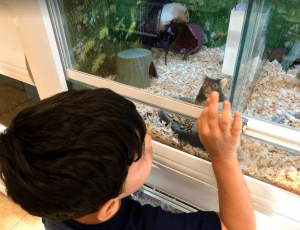
We took the opportunity to have a quick side parent-only meeting to discuss. We’re not really looking to have another pet in the house, but we also didn’t want to just dismiss his request completely and ignore him. Neither one of us intend to be cleaning up after a hamster (let’s face it, having three kids and a dog is quite enough work!) and don’t want to have to continue buying food or bedding. But we also saw a great teaching opportunity coming from this, and so we decided to see what we could do with this moment.
While we were talking, our boy named the hamster “Clever.” Ha! Talk about quick attachment!
“Hey bud, let’s talk.”
“OK, Daddy. So I can have Clever?”
“Mama and I thought about it, and we’d like to make you a deal. We don’t really want to buy a hamster. We already have Rudy and one family pet is a lot of work. But this might be a good chance for you to show how responsible you are with a pet of your own.”
Bright-eyed little boy getting excited over here! “REALLY?! I CAN HAVE CLEVER?!?!”
“Buddy, that’s where the deal comes in. Mama and Daddy don’t want a hamster, so we’re not going to pay for him. But if you really want a hamster, then we can talk about it and we can create a goal for you to use your ‘Save Jar’ money to buy him.” Check out our system for budgeting into different jars here.
Sheer elation now. “YEESSSSSS! Let’s get him now!”
Whoaaaaaaaaa. Not so fast!
If you haven’t yet read our requirements for using the ‘Save Jar’ money, here’s the post again. Money doesn’t just “come out” of the Save jar. This is how we teach delayed gratification and prioritizing. You can’t do that if they can just raid their money whenever they feel like it.
“Well, no. We can’t just get him now. We need to figure out how much it costs to buy and own a hamster, its habitat, its food and bedding. Let’s go talk to the person working over there to figure it out.”
Audible sigh and sounding a bit deflated. “Ok, daddy.”
So store clerk told us the hamster was $12, showed us several different habitats (the least expensive was about $60), the food ranging in bags of $10 to $25, and the bedding ranging in packs of $9 to $18. Lots of expenses.
I pulled out my phone and handed it to my five year old. [If I’m going to use the calculator, I might as well let him learn to do it at the same time.]
“OK, bud! Let’s calculate this. What’s $12 plus $60 plus $10 plus $18?”
I can see his body language changing while he’s adding it up. “Wow! It’s $100! I don’t have that much saved up.” Tears commence. He’s sad. I get it.
Still in front of the store clerk at this point. “Hey buddy, that’s the price stores tell people. Lots of stores have deals that they don’t just tell you about. You have to ask. What if you ask if there are any less expensive deals available?” Crap. What am I doing? I don’t REALLY want a hamster, why did I just do that? The things we do for our kids!
“Are there any good deals on hamsters and their habitats right now?”
The clerk smiles at him and walks away. She comes back holding a hamster habitat with a big sign on it that reads “$40: Includes hamster, habitat, food and bedding”
“Only $40! I can save $40! Yayyyyy!!!”
At this point I realize this might actually happen. I assumed there was a chance, and we were OK with that, but we weren’t really excited about it. This is more than just kids wasting their money. This is an actual living animal and would require ongoing responsibility and self-discipline. But, I suppose this is a good learning experience for our five year old.
We had a conversation about going home and counting his ‘save’ money and making a goal. He expressed his displeasure at having to wait, but could sense I wasn’t going to give in…and I reassured him that we weren’t saying “no”…just “not yet.”
We asked the clerk to put the hamster on hold for us and that we might be back in a few days to pick up Clever the hamster. We had no idea how much money our son had in his Save jar and didn’t want to overcommit.
At home, he immediately grabbed his Save jar to count it. He pulled all the crinkled $1 bills out of the jar and tallied them up. $28. Not bad! But it’s still going to take a while to get to $40.
Then he surprised me. “What if I use my Spend money too, Daddy?”
A completely awesome idea! He dashed upstairs to grab that jar so he could count that money. $7 in the spend jar, and he moved all of it over to the Save jar.
Now he was up to $35. Still $5 short. But it was only Wednesday. Pay day is on Friday. He gets $2 for Save and $2 for Spend on Fridays, and we match any $2 moved from Spend to Save on pay day with an additional $1. That’s the $5 right there.
Just like I mentioned in the post about teaching kids to budget, we need a SMART goal for any money to come out of the Save jar.
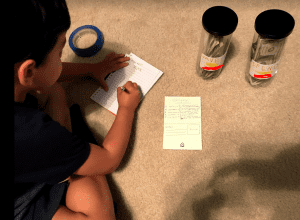
So he drew up his SMART goal, to save $40 to buy Clever the hamster by next week.
We were a bit flexible with the R in smart (relevant) because this kid really loves animals. I pushed the T (time bound) out to next week because we were going camping that weekend and didn’t want to buy a hamster on Friday only to come home on Sunday to an empty cage. Plus, this whole thing is to teach delayed gratification, and this blew up in my face a bit that he already had so much saved. Pushing it out until the following week gave him some time to dream about having his own hamster without making it painful – he is only five after all.
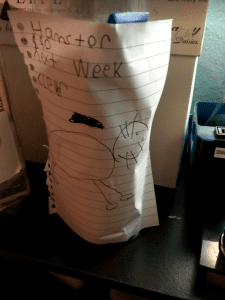
I’ll fast forward through the camping trip where he asked me about Clever every five minutes. 🙂
Sunday morning came and we heard about Clever all day. Our plan was to go to the pet store Monday after school. But we deviated from the plan to end his suffering.
We get to the pet store, find Clever running on his wheel, and go to check out. The clerk tells us ‘he’ is actually a ‘she.’ Our boy doesn’t care, the hamster’s name is Clever.

He hands over $40 in $1 bills and the cashier chuckles as he counts it out. He has exactly the right amount. We take the hamster home. The entire drive home, Alana and I are looking at each other with the whole, “What the heck did we just do?” look.
This is where the story deviates a bit from personal finance and gets more into family life and parenting a five year old. He’s lost interest in a matter of minutes. No surprise there. Our lesson learned.
That’s when something equal parts sad and fortunate happen. Alana and our oldest son both start sneezing uncontrollably. Who knew that people could be allergic to hamsters?
We never thought we’d appreciate having allergies before, but we really were relieved that this happened. And, surprisingly, after returning the hamster to the pet store, our son hasn’t brought the hamster up once. He was extremely empathetic toward mom and brother having the allergies and knew it didn’t work.
While we regret having to disappoint him with returning the hamster, the lessons he learned about saving up money for something important, waiting through a few days for delayed gratification, and the opportunity to display empathy to his family were all invaluable. Most importantly, these are lessons that never would have happened if we weren’t intentionally teaching our kids about money.

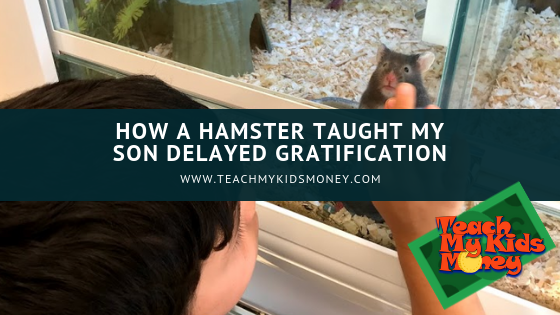

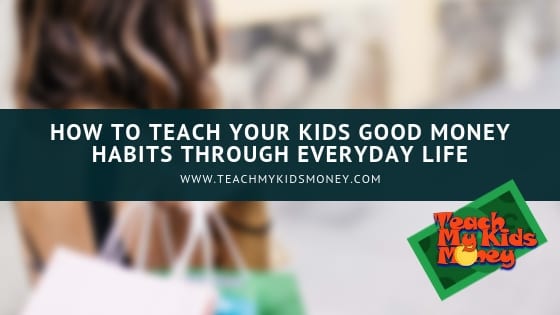
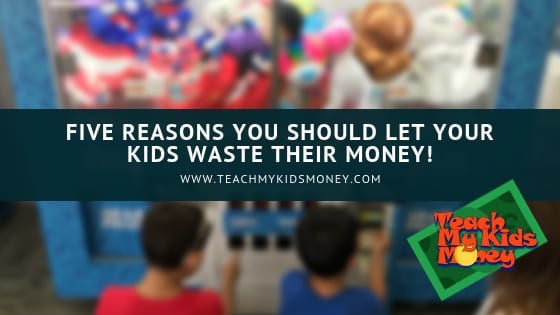


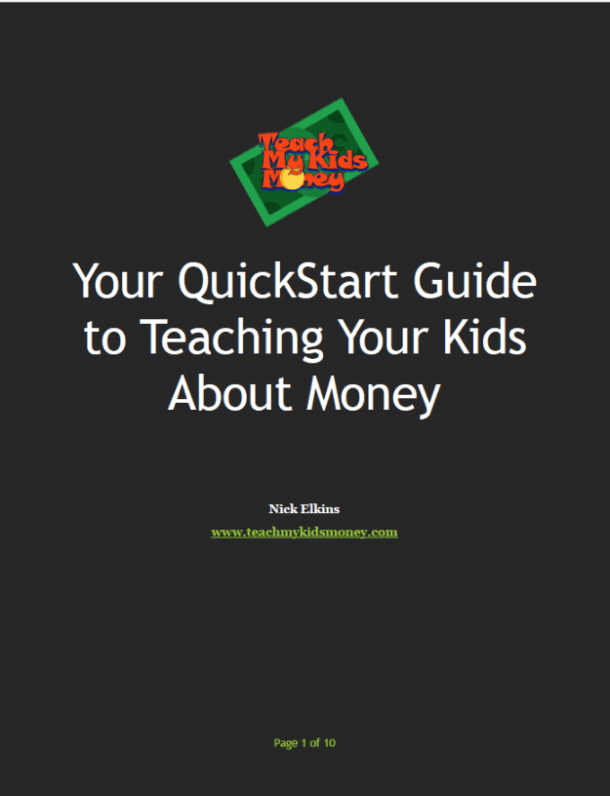
It’s so hard to say no to puppy dog eyes – except when they try to use them on you after 10 years old …not as cute 😆
Such a great story, I love the photo of him and his jars!
It really is! We’re not there yet with a 10 year old (our oldest is 7), but I can already see the effectiveness wearing off with him. 🙂
Thanks for the comment! Love your blog name!